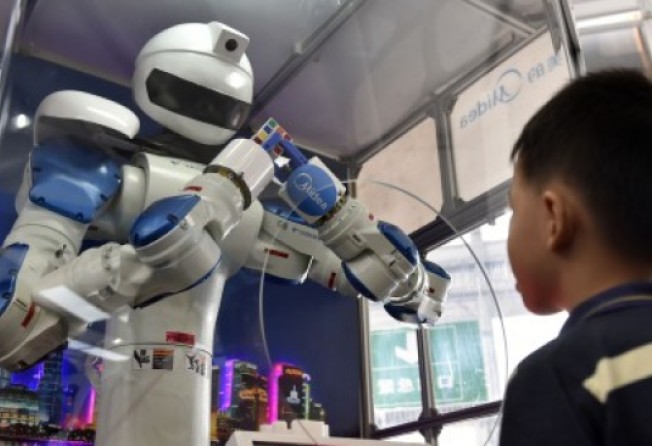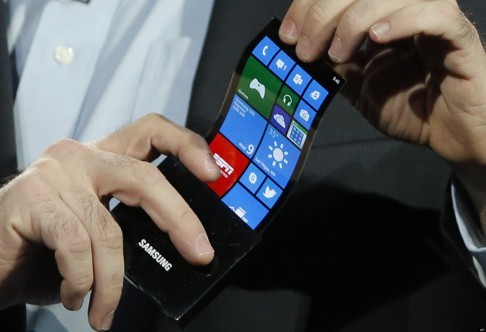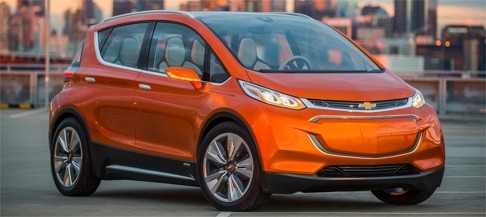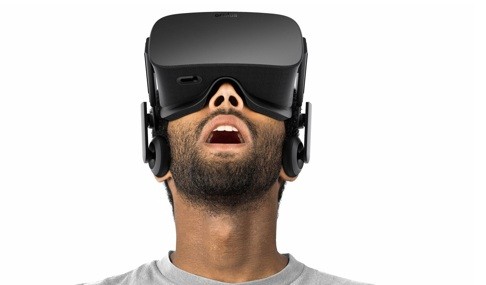
Virtual reality, robot companions and wraparound smartphones: Top 5 tech trends due in 2016

This year the growth and battles of car-hailing apps, the rise of commercial drones, and the industry consolidation that is taking place in China’s tech circles have been among the major stories, not to mention e-commerce giant Alibaba’s spending spree in the wake of its US$25 billion IPO in New York last year and the record sales seen this November 11, dubbed “Singles Day” in China.
We expect the year ahead to be just as - if not more - action packed and full of thrills as we watch with keen interest the development of augmented and virtual reality, the wider spread use of electric vehicles, and new tech we probably haven’t even imagined yet.
2016 will also see many highly anticipated products finally hit store shelves. It will be a year that brings us even closer to the future we dream of, one filled with smart gadgets, connected devices and new heights of digital assistance to make our lives easier, faster and more convenient.
Here are five technology trends that are likely to make a real difference for you in the next 12 months.
HD streaming video on the go
Our smartphones have screens capable of showing high-definition movies, but most networks aren’t yet fast enough to stream those crisp images we so desire. Blurred images and buffering rolls are like nagging injuries you just can’t shake off. That should all change in 2016, at least in some parts of the world.
Two Hong Kong telecoms operators, HKT and 3 Hong Kong, have both successfully demonstrated their so-called 4.5G technology this year, an enhanced version of current 4G technology that delivers download speeds of over 1 GB per second. Both expect it to be widely available in the city the first half of the year. With Netflix soon coming to Hong Kong, and streaming service like ViuTV and LeTV expanding their content libraries, it should be an exciting year for movie lovers and sports fans who like to stay glued to their phones while on the move.
Wrap your phone around your wrist
It is getting harder to fit that new smartphone or phablet in your pocket nowadays as they keep on growing in size. The clash between wanting a bigger screen and a phone that is easy to navigate with one hand and in one pocket may finally be resolved in 2016 as smartphone makers are tipped to introduce foldable devices. A far cry from now old-fashioned flip phones, they have paper-thin screens that can be folded and rolled without affecting the image.
Leading the way are South Korean electronics giants Samsung and LG. They already gave a preview of the futuristic technology at work in their flagship phones. Samsung’s Galaxy S6 and Note Edge already feature screens that bend at the edges, while LG’s G Flex series also has curved displays.
Pundits expect upcoming models will incorporate screens that can be rolled around the wrist. An official from Samsung told South Korean media recently that the commercialisation of foldable phones will be possible in 2016.
In lieu of official confirmation, all we have to go on at present are a number of tech blogs and tipsters, but the technology is there. Samsung showed off prototypes of foldable screens as far back as 2013.
Rise of the machines in the living room
Before they steal people’s jobs and continue the embryonic industry revolution of a fully automated workforce, robots are expected to start emerging in society as human companions. Japanese telecoms giant SoftBank started selling Pepper, a 1.2-metre humanoid that can react to human emotion, in June. The company teamed up with Taiwan manufacturer Foxxconn in a bid to meet high demand for robots of this ilk. It plans to sell 1,000 units online every month for about US$1,600 a pop. According to SoftBank, the machines have sold out almost immediately whenever it has made them available.
If the idea of this freaks you out, don’t fret: You can expect more help this year from virtual assistants such as Apple’s Siri, Microsoft’s Cortana, Google Now and Amazon’s Echo, which are just going to keep getting cleverer and more sophisticated. They are embedded in smartphones, computers and even games consoles.
New electric cars will be more affordable
It isn’t easy being cool and environmentally friendly, especially on a tight budget. A Tesla Model S goes for between US$60,000 and US$ 90,000, and the new luxury SUV Model X will set you back a whopping US$132,000 - enough to purchase two Porsche Cayman.
But in 2016, electric cars should be easier on the wallet. Tesla will release a long-awaited new vehicle for the mass market, the Model 3. Chief Executive Elon Musk says to expect it late in the year, with a rumoured price tag of about US$35,000. Insiders expect it to give 200 miles (322 kilometres) on a single charge. It will likely compete with GM’s Chevrolet Bolt, which retails for US$30,000 and also has a range of 200 miles. GM is expected to give a demonstration of the car at the Consumer Electronics Show in Las Vegas in January. Other companies due to make major announcements in this field include Citroen and Hyundai.
Virtual reality becomes reality
After years spent in development and a raft of marketing campaigns, virtual reality devices from major players should finally hit the shelves in 2016. Oculus Rift, a key player this field that Facebook snapped up for a cool US$20 billion in 2015, will release “The Rift” in the first quarter. Meanwhile, Taiwan smartphone maker HTC has partnered with US gaming giant Valve to make Vive, another virtual reality headset that is receiving waves of praise. It should be available to purchase sometime this year. Sony’s PlayStation VR - a headset that integrates with the PS4, is also in the pipeline and should be good.
These high-performance headsets are not cheap, however, and they mainly target serious gamers. But there are options at the lower end of the spectrum. Samsung released a pair of goggles for US$99 called Gear VR recently. These require the use of a high-end Samsung smartphone to serve as both display and motion sensor. But the cheapest devices link to Google Cardboard, which can create a de facto IMAX cinema in your glasses. One costs as little as US$4.
Virtual reality content is also booming. YouTube released a 360-degree video feature earlier this year, streaming videos that can be viewed in every angle. Even Chinese state-owned news agency Xinhua deferred to virtual reality to show rescue efforts at site of the recent landslide disaster in Shenzhen, Guangdong province.



